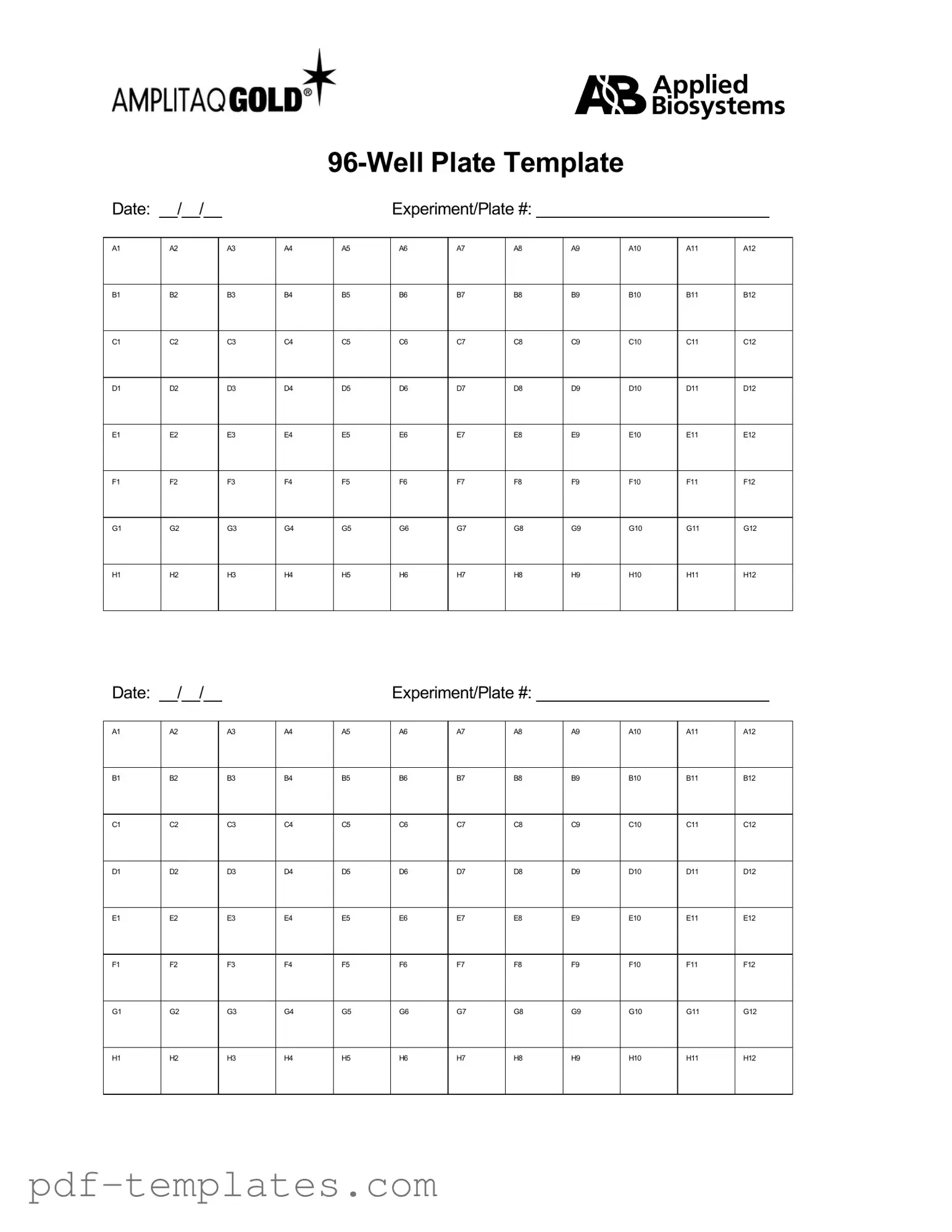The 96 Well form is similar to the Laboratory Information Management System (LIMS) document. Both serve as essential tools for managing laboratory samples and data. LIMS provides a comprehensive framework for tracking samples, managing workflows, and ensuring compliance with regulatory standards. The 96 Well form, often used in high-throughput screening, allows researchers to systematically record and analyze experimental results, facilitating data management and enhancing reproducibility in scientific research.
Another document that shares similarities with the 96 Well form is the Chain of Custody form. This document is crucial in maintaining the integrity of samples throughout the testing process. It records the handling of samples from collection to analysis, ensuring that they are not tampered with or contaminated. Like the 96 Well form, the Chain of Custody form emphasizes accuracy and accountability, which are vital for producing reliable results in scientific studies.
The Sample Submission form also bears resemblance to the 96 Well form. This document is utilized when researchers submit samples for testing or analysis. It typically includes details such as sample identification, quantity, and specific tests requested. Both forms aim to streamline the process of sample management and ensure that all necessary information is captured for effective analysis.
The Experimental Design form is another document that aligns with the 96 Well form. This form outlines the specific methodologies and protocols to be followed during an experiment. It helps researchers plan their studies effectively, detailing variables, controls, and expected outcomes. Like the 96 Well form, the Experimental Design form aids in organizing information, which is crucial for data interpretation and validation.
The Data Collection Sheet is similar to the 96 Well form in that it serves as a means to gather and organize experimental data. This document can be used in various research settings to record observations, measurements, and results. Both forms prioritize clarity and organization, enabling researchers to analyze their findings systematically.
The Protocol form also shares characteristics with the 96 Well form. It provides detailed instructions on how to conduct experiments, including sample preparation and analysis procedures. The Protocol form ensures consistency in research methods, while the 96 Well form focuses on the results obtained from those methods, making them complementary tools in the research process.
Similarly, the Quality Control Checklist serves a purpose akin to that of the 96 Well form. This document outlines the steps necessary to ensure that experiments are conducted properly and that results are reliable. Both documents emphasize the importance of maintaining high standards in research, contributing to the credibility of scientific findings.
The Inventory Log is another document that parallels the 96 Well form. It tracks the quantities and locations of samples and reagents within a laboratory. By maintaining an accurate inventory, researchers can ensure that they have the necessary materials for their experiments. Both the Inventory Log and the 96 Well form facilitate efficient laboratory management and help prevent errors during the research process.
The California Rental Application form is essential for landlords who wish to ensure thorough screening of potential tenants. This vital document helps in gathering detailed information regarding applicants, such as their employment background, rental history, and references, allowing for a comprehensive assessment of their reliability. Utilizing a standardized approach, this pre-screening tool promotes fairness while adhering to California housing regulations. For further resources, you can visit All California Forms.
The Laboratory Notebook is also comparable to the 96 Well form. This document serves as a comprehensive record of all research activities, including experimental procedures, observations, and results. Like the 96 Well form, the Laboratory Notebook is essential for documenting scientific work, ensuring that findings are reproducible and verifiable.
Lastly, the Research Proposal form is similar to the 96 Well form in that it outlines the objectives, methods, and significance of a research project. This document is critical for securing funding and institutional approval. Both forms play a pivotal role in the research process, as they help to clarify the research goals and the methods by which those goals will be achieved.
